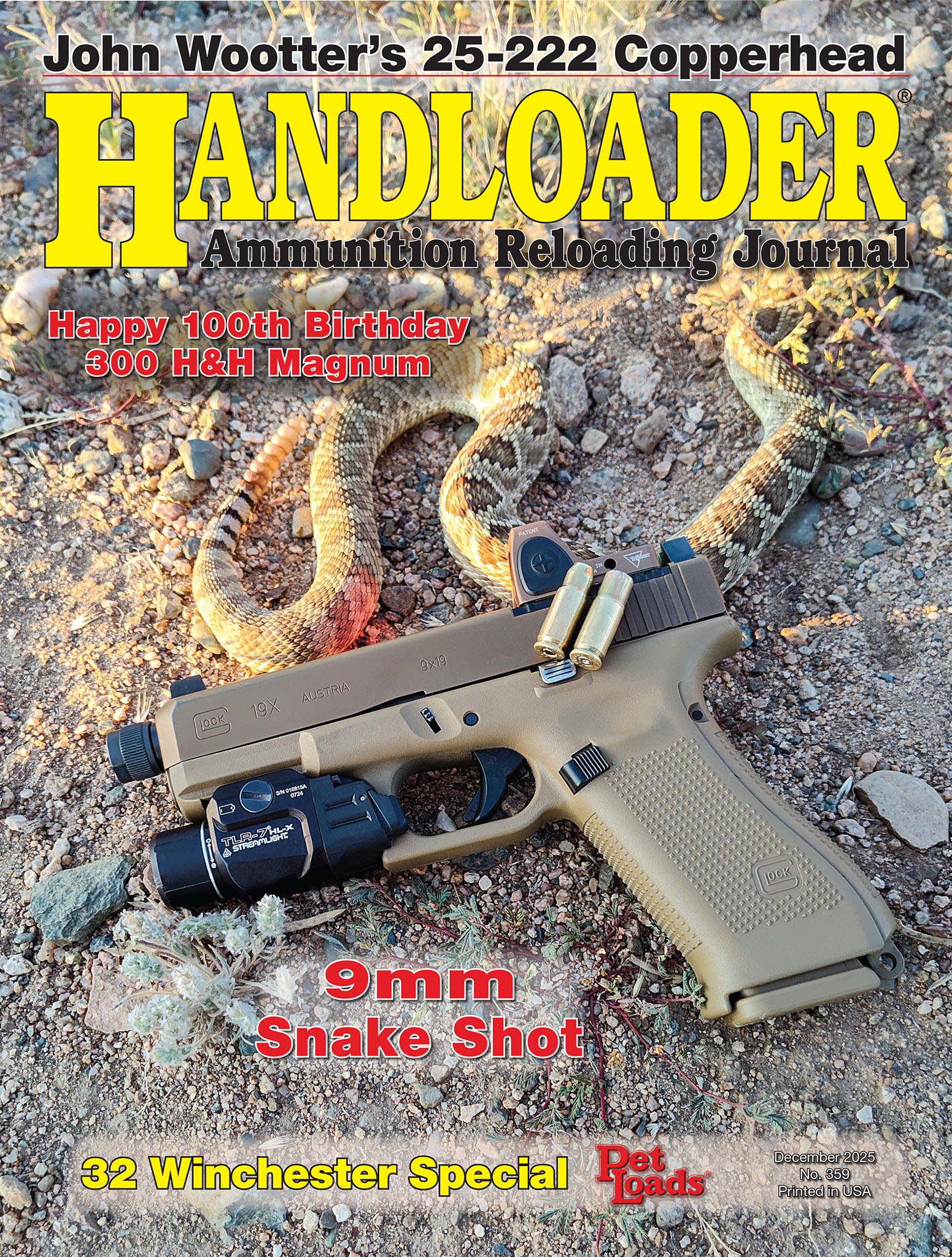Wildcat Cartridges
358 JDJ
column By: Layne Simpson |
.jpg)
It is a well-known fact that Parker Otto Ackley created many wildcat rifle cartridges, with several still quite popular today. Lesser known is the fact that when all the wildcat rifle and handgun cartridges created by J.D. Jones are added up, they would likely exceed in number those produced by P.O. Ackley. Jones’ best-known cartridge, the 300 Whisper, was, and still can be, formed by necking up the Remington 221 Fireball case for heavy .308-inch bullets weighing as much as 240 grains and pushing them to subsonic velocities.
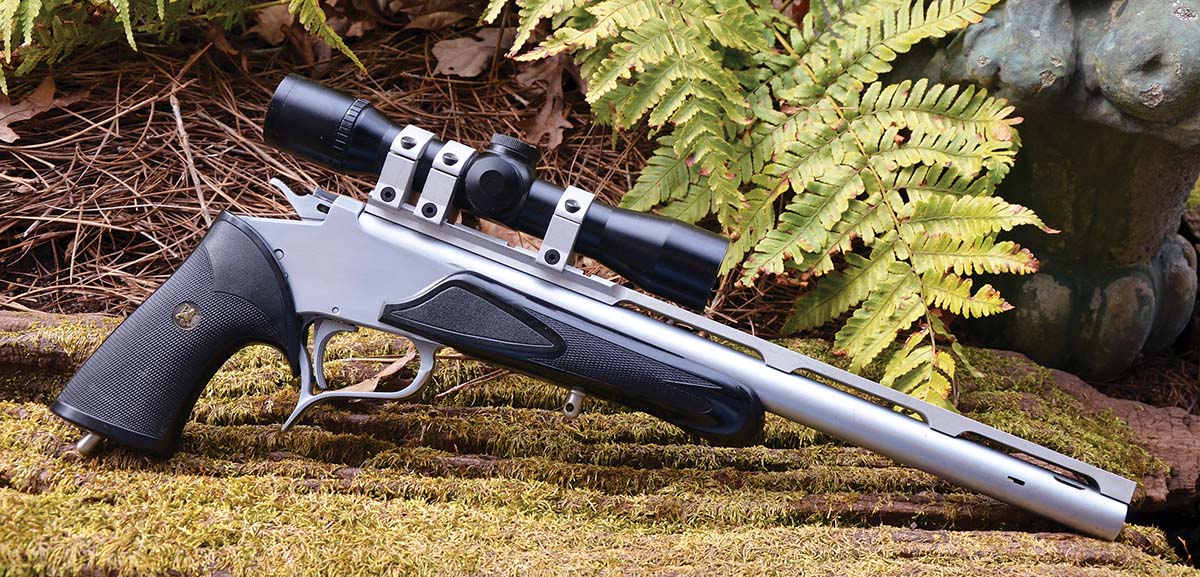
Intended for use by law enforcement and the military in the AR-15/M16 rifles, converting one was slightly more complicated than switching barrels. Unfortunately, Jones became so busy promoting and spending the money required for developing reams of loads for the various Whisper cartridges that he failed to register it with SAAMI (Sporting Arms Ammunition Manufacturers’ Institute). That left the door of opportunity open for Advanced Armament Corporation (who changed the name of the 300 Whisper to 300 AAC Blackout) to join forces with Remington, who sponsored the cartridge with SAAMI. With the exception of their headstamps, the two cases are identical, so reloading dies made for the 300 Whisper and 300 Blackout can be used. J.D. Jones developed about a dozen other subsonic cartridges of other calibers, with some on the 221 Fireball case and others on the shortened 300 Lapua case.
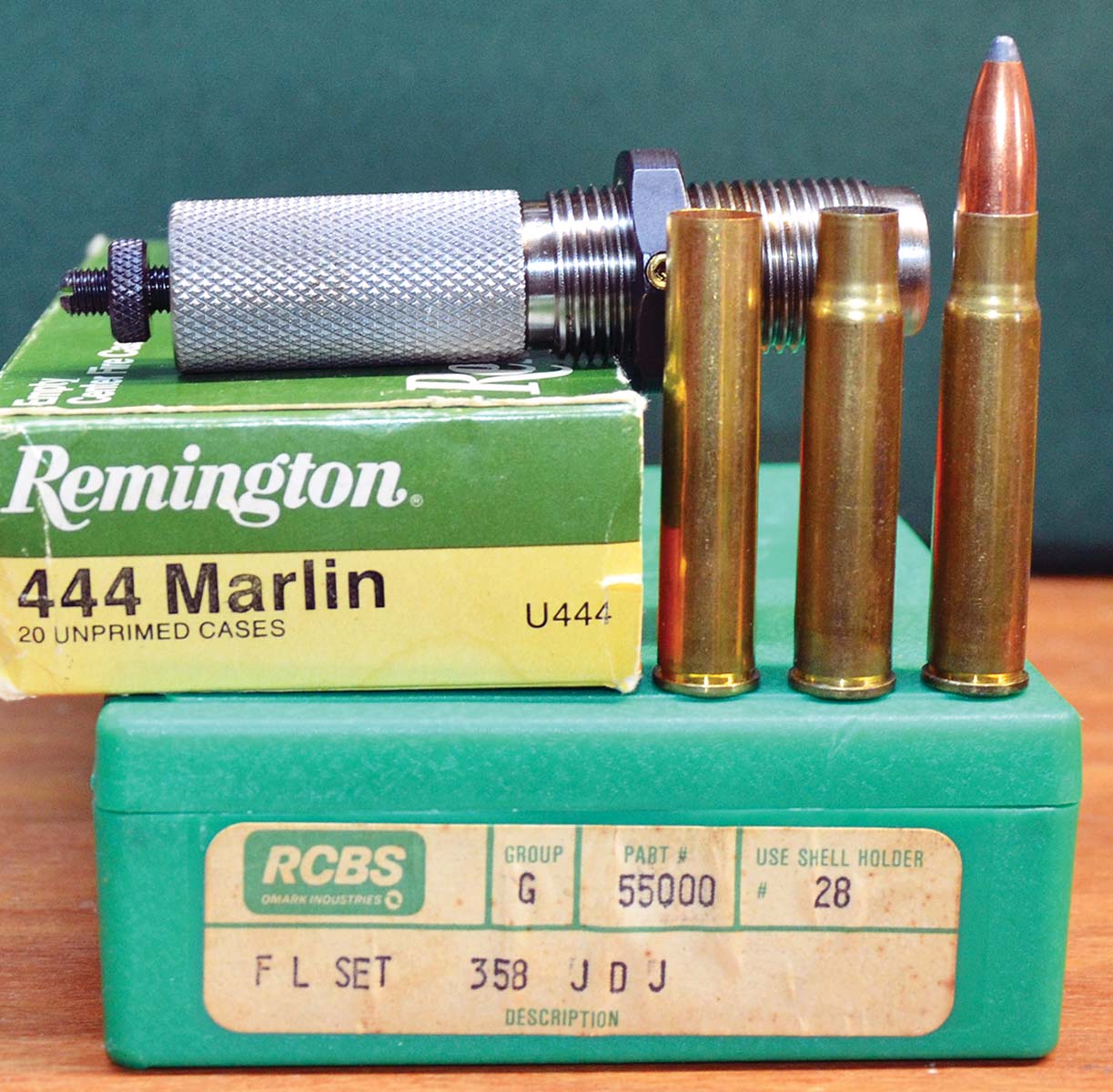
Moving now to the star of this column, the 358 JDJ is one of six cartridges on the 444 Marlin case developed during the 1970s by J.D. Jones for the Thompson/Center (T/C) Contender single-shot handgun. Except for their bullet diameters, the 309, 8mm, 338, 358, 375 and 416 JDJ cartridges are the same. All six cases are formed by necking down the 444 Marlin case and fire-forming for slightly less body taper and a 40-degree shoulder. I have 14-inch barrels chambered for the 309, 8mm, 358 and 375 versions.
When a case is fire-formed in the JDJ chamber, it emerges with a slight reduction in body taper and a 40-degree shoulder angle. There is not a lot of taper in the 444 Marlin case to begin with, so blowing it out to the improved shape results in a capacity increase of less than four percent, but there is a more important benefit.
Many years ago, P.O. Ackley opined that decreasing the taper of a case decreases its thrust against the locking mechanism of a firearm during firing simply because it has more of a tendency to cling to the wall of the chamber than a cartridge with a sharply tapered case. This assumes the case and wall of the chamber are dry with no trace of oil or grease. As clearly described and illustrated by Ackley in his Handbook for Shooters & Reloaders (Volume 1), he first fired the standard 30-30 Winchester in a Winchester 94 and then rechambered the barrel to 30-30 Ackley Improved with its reduced case taper. Don’t try this at home, but when the locking bolt of the rifle was removed and the rifle loaded with the improved version of his cartridge and fired in the improved chamber, the breech bolt remained closed by nothing more than its weight and the weight of the finger lever bearing on it.
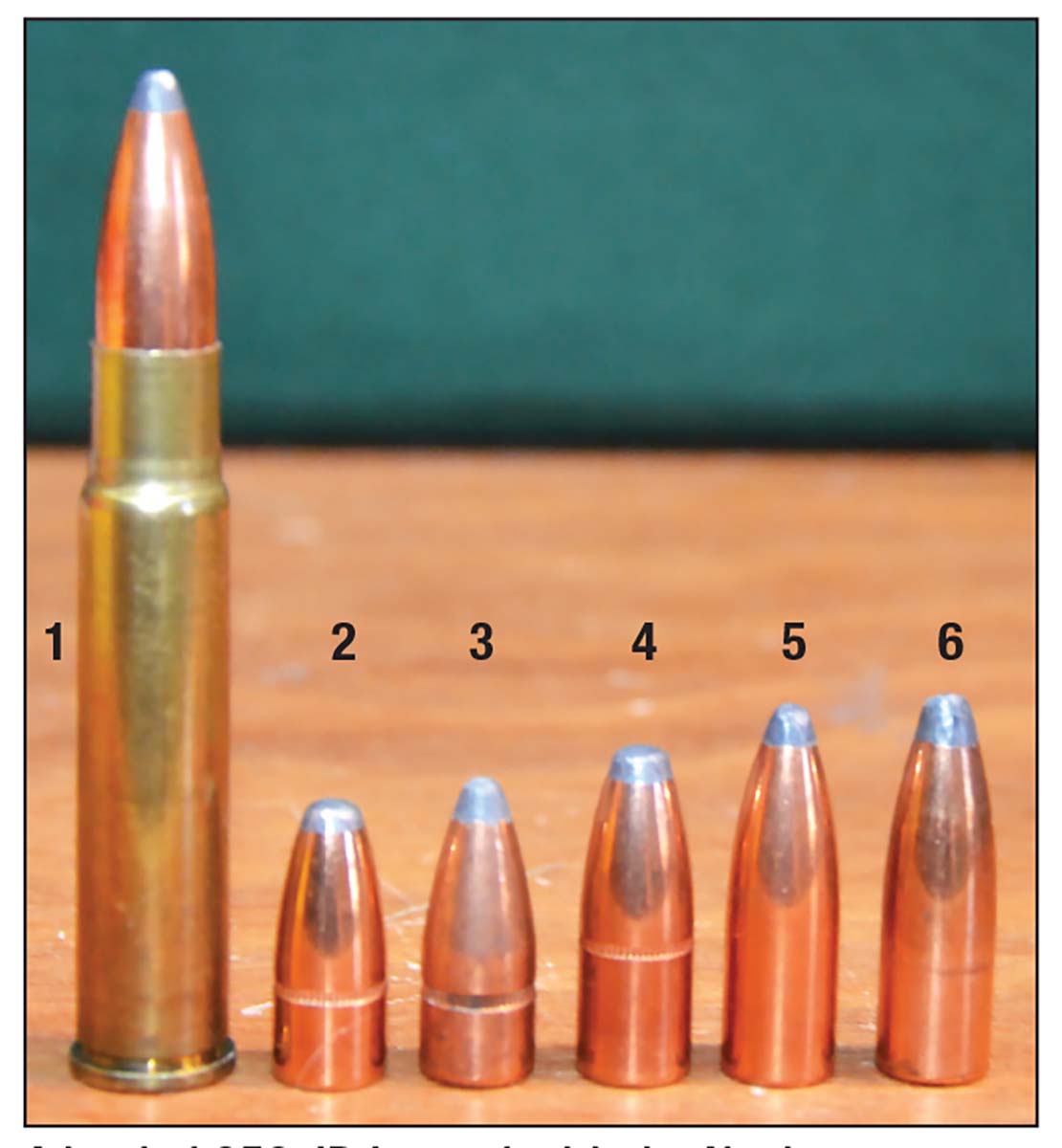
Years later, I was reminded of Ackley’s experiments when rebarreling a Marlin 336 in 356 Winchester to a wildcat formed by necking down the 307 Winchester case for 120-grain and 139-grain flatnose 7mm bullets that were available from Nosler and Hornady at the time. When experiencing sticky case extraction at velocities much lower than the cartridge was capable of, rechambering to an improved version of the same cartridge with less taper in the case reached my velocity goal with no sticky extraction or signs of excessive pressure.
The 358 JDJ case is surprisingly capacious. Gross water capacity is about 12 grains more than for the 358 Winchester (Starline brass). Even so, chamber pressure has to be kept considerably lower than for the 358 Winchester due to the limited strength of the T/C Contender handgun. Quite a bit stronger (and also heavier), the T/C Encore is capable of handling higher pressures than the Contender. Despite that, the Contender is strong enough to deliver impressive velocities from the 358 JDJ. I also have an XP-100 handgun built by the Remington custom shop when it was located at the historic Ilion, New York factory. It has a 15-inch barrel in 35 Remington, and when it and the 358 JDJ in my SSK Contender are loaded with maximum charges of powder behind 200-grain bullets, the Contender is about 300 feet per second (fps) faster.
Remington 444 Marlin cases can be difficult to find, and while those made by Starline and Hornady are equal in quality, their base diameters are slightly larger. More specifically, the Remington cases I have measure .464 inch, whereas the Starline and Hornady cases are .467 inch and .466 inch, respectively. My two Marlin 444s are quite happy with either of those cases. Due to their larger base diameters, the Starline and Hornady cases necked down will not fully enter the chamber of my SSK Contender barrel in 309 JDJ, but they work fine in my 8mm JDJ, 358 JDJ and 375 JDJ barrels. So, the chamber of my 309 JDJ barrel was obviously reamed to the absolute minimum dimension. Quality Cartridge makes 358 JDJ cases with the proper head stamp, and they are usually available from Graf & Sons.
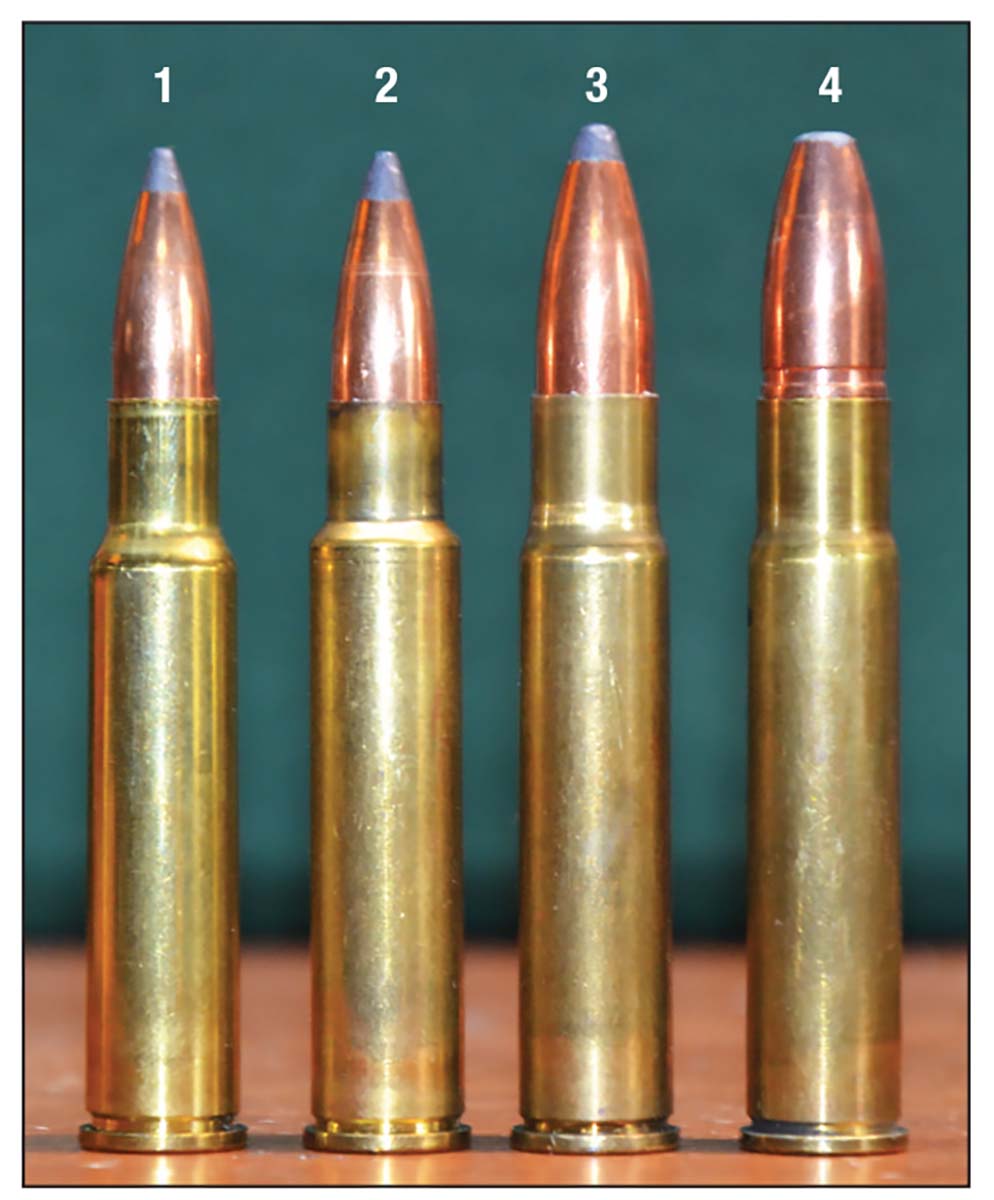
SSK barrels were made from Shilen blanks, and most were stainless steel, although Jones rechambered blued-steel Thompson/Center barrels in 35 Remington to 358 JDJ, sent to him by many of his customers. A friend of mine who does most of his shooting from portable tree stands in thickly wooded country has one of those barrels for his Contender, and he has used it to take many feral hogs, whitetail deer and coyotes. He favors the Speer 180-grain bullet pushed to 2,400 fps by 46.5 grains of H-4198. The rifling twist rate of our barrels differs, 1:16 for his and 1:12 for mine. A heavy bullet guy, J.D. Jones chose the quicker twist in order to stabilize pointed bullets weighing up to 250 grains.
As a historical note of possible interest to those who have Contender handguns, when introduced in 1967 by Ken Thompson and Warren Center, the sides of its frame were plain with no engraving, and collectors know them as “flatside” guns. Very few were made. Various acid-etched patterns, followed with a crouching puma on one side and an eagle on the other, is my favorite example. A crouching puma on both sides was next, followed by only the head of the puma on the two sides. There may be others that I am unaware of. In 1980, the International Handgun Metallic Silhouette Association (IHMSA) specially ordered 400 flatside Contenders from Thompson/Center in various calibers and made them available to members. The T/C custom shop also offered flatside guns, and since J.D. Jones was buying large numbers of Contender frames from T/C he ended up with his share of flatside frames. As can be seen in my photo of the SSK gun wearing a barrel in 358 JDJ, it has that type of frame.
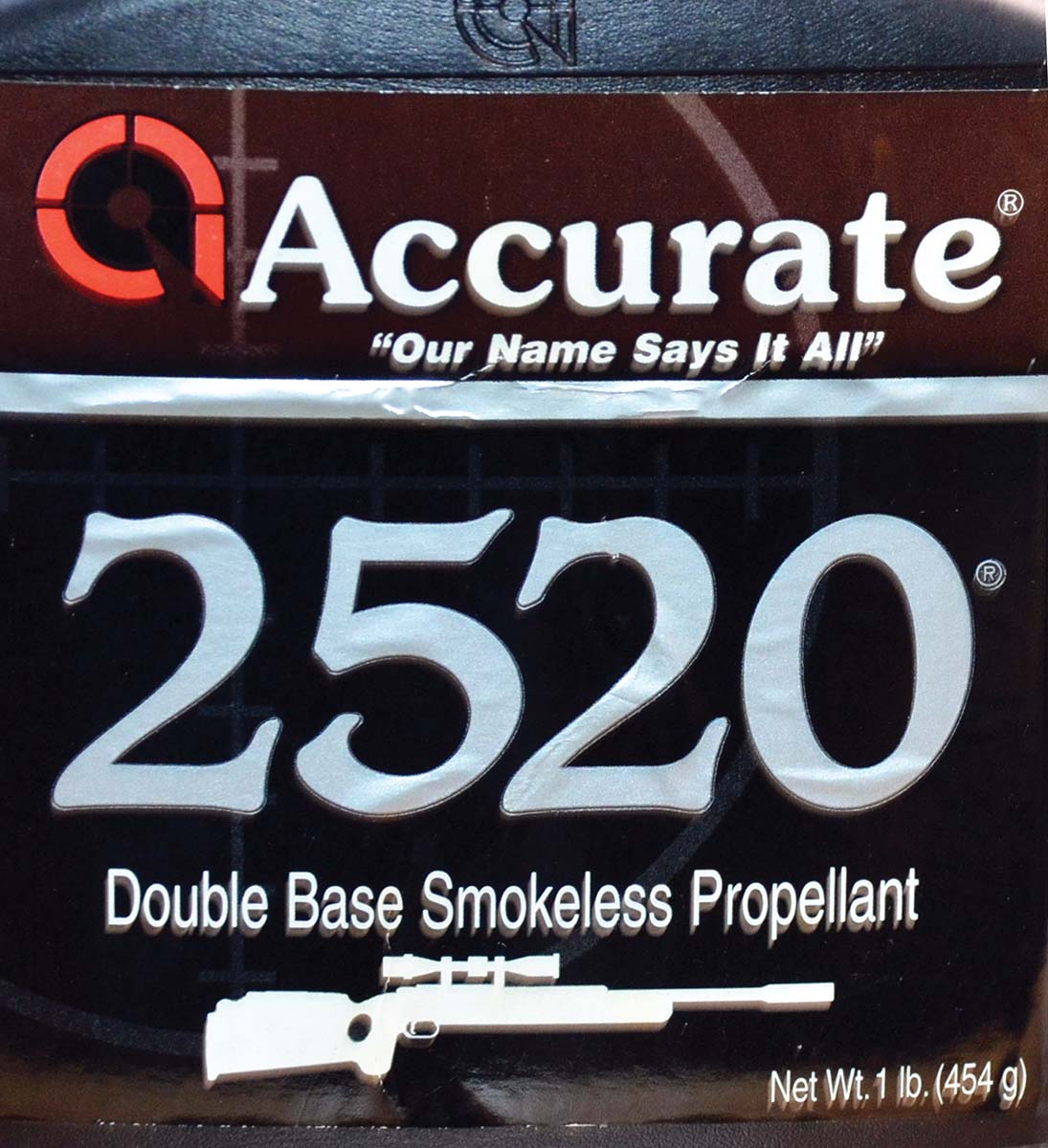
Shooting a Contender chambered for a powerful cartridge is not as punishing as it might appear. Valuable lesson number one, mine wear Pachmayr rubber grips. Then there is the matter of weight. With a scope and a 15-inch barrel, a custom gun built by SSK Industries with usually weighs around five pounds. The TSOB scope mounton some of the barrels I have extends all the way to the muzzle and that adds a few ounces. A Mag-Na-Port brake on some of my barrels reduces muzzle rise a bit. Whereas a rifle chambered for the same cartridge pounds the shoulder and cheek with each shot, when shooting a Contender, the arm of the shooter serves as a shock absorber and adds weight to the gun as well. On more than one occasion through the years, I have invited others to sit at a benchrest and shoot my SSK Contender with a 15-inch barrel in 45-70 and a Marlin 1895 chambered for it over a sandbag rest. Each person was surprised by the fact that the Contender was more comfortable to shoot.
I have taken quite a bit of game with the 309 JDJ, including a very good barren ground caribou in Alaska. Another favorite, the 6.5 JDJ on the 225 Winchester case, has proven to be quite effective on deer and is great fun to shoot as well. I must confess to mostly punching holes in paper with the 358 JDJ, although it has accounted for several feral pigs.
For the benefit of those who wonder what happened to J.D. Jones and SSK Industries, not long after J.D. retired, the company was acquired by Dave Frickie, who owned Lehigh Defense at the time. The name was changed to SSK Industries and is now owned by Bill Geissele of Geissele Automatics. To those who do not already know, Smith & Wesson recently sold Thompson/Center to a group of investors led by Greg Ritz, who was president and CEO of the company prior to the S&W acquisition in 2006. In other words, rather than being a neglected pea in a very large pod, Thompson/Center and the Contender are back among friends who really care about them.
.jpg)


